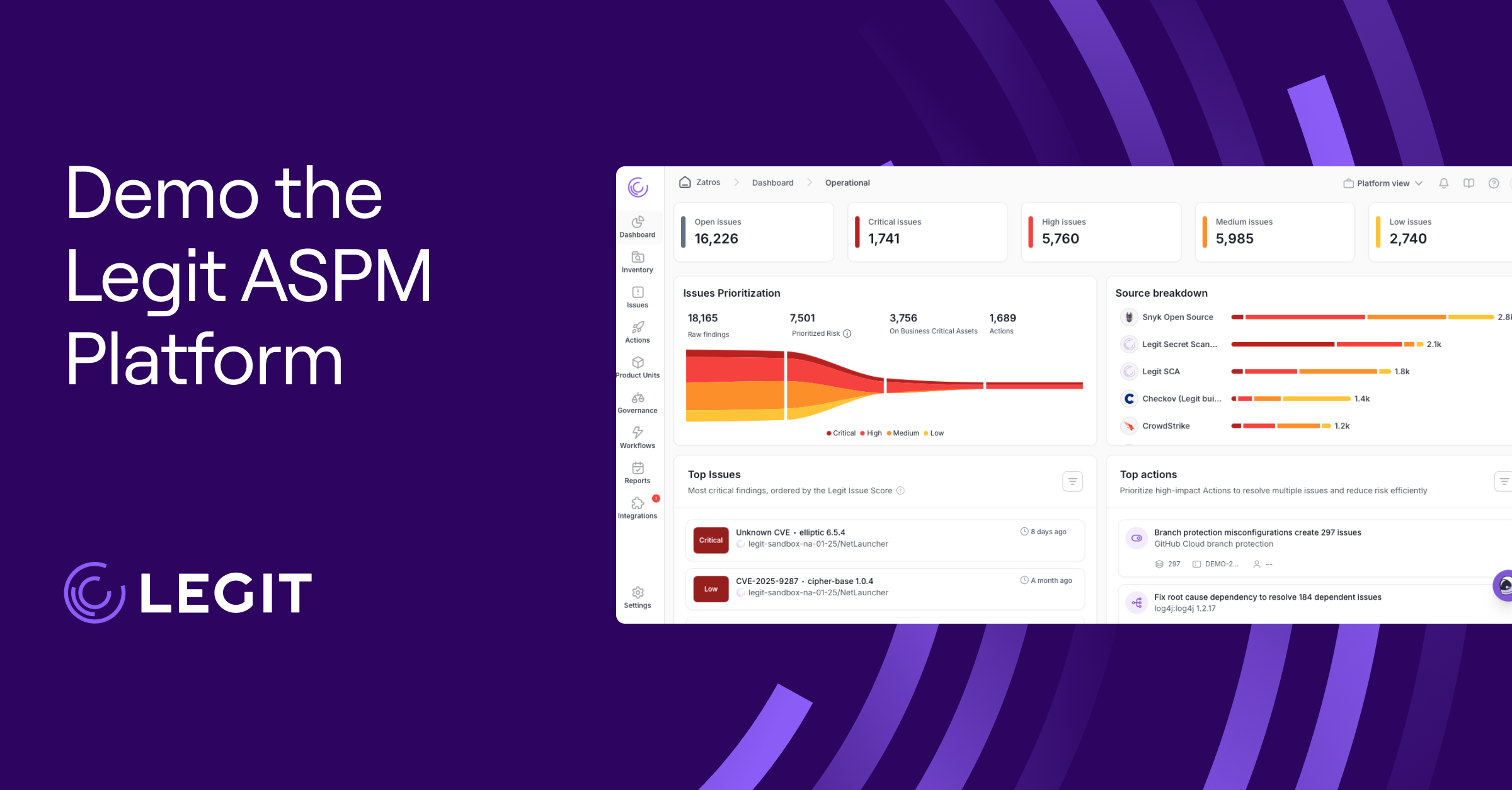Data security posture management (DSPM) helps organizations uncover hidden data risks across their cloud environments before they become breaches or compliance issues.
Instead of relying on perimeter defenses or reactive alerts, DSPM data security gives you ongoing, contextual visibility into your cloud data footprint. Gain the insights you need to enforce least-privileged access, ensure encryption standards are met, and respond quickly when data is at risk.
Here’s a guide to DSPM, how it works, and why it matters. We’ll also discuss its core capabilities and how it compares to other tools like cloud security posture management (CSPM) and application security posture management (ASPM).
What Is DSPM? Data Security Posture Management Defined
DSPM is a modern, data-first approach to cloud security. Unlike legacy tools—such as data loss prevention (DLP) systems—that focus on enforcing static policies at the perimeter, DSPM zeroes in on where the data lives, how it moves, who can access it, and if it’s adequately protected. This helps uncover blind spots like forgotten data stores or unencrypted backups.
DSPM continuously discovers and classifies sensitive data across your environment, whether software-as-a-service (SaaS) apps, infrastructure-as-a-service (IaaS), or on-prem databases. Once it understands what kind of data you have, it assesses your security posture so you can take action.
DSPM Vs. CSPM
CSPM focuses on cloud infrastructure security, scanning for misconfigurations, weak access controls, and policy violations across services like Azure and Google Cloud. It helps you find and fix risky settings in places like storage buckets and identity and access management (IAM) configurations.
DSPM focuses on the data itself. While CSPM might flag an open storage bucket, DSPM reveals if that bucket contains unencrypted customer records that would be available to an excessive number of users. CSPM reduces infrastructure risk, and DSPM reduces data risk.
ASPM Vs. DSPM
ASPM and DSPM each target a different layer of modern security. ASPM secures the SDLC from code to deployment by identifying vulnerabilities, misconfigurations, and compliance issues across your software factory. It collects and correlates insights from static and dynamic scanners and runtime environments to fully understand application risk.
DSPM, on the other hand, tracks what those applications interact with—the sensitive data they generate, store, or transmit. While ASPM tightens the security of your build process, DSPM protects the data behind it at every stage.
How Does DSPM Work?
DSPM continuously discovers and classifies sensitive data and evaluates its security or exposure in real time.
The process begins with automated data discovery across cloud infrastructure and databases. A DSPM platform scans structured and unstructured data, including object stores, file systems, and ephemeral environments like dev sandboxes. The platform then classifies the data based on sensitivity—such as personally identifiable information (PII), protected health information (PHI), login credentials, or intellectual property (IP)—to help you prioritize what’s at risk.
Security teams typically categorize DSPM capabilities into two broad groups: passive and active. Passive capabilities include continuous data discovery and visibility into exposure paths. Active capabilities go further, automating remediation by revoking excess access or triggering policy enforcement workflows through integrations with platforms like Jira or security orchestration, automation, and response (SOAR) systems.
Modern DSPM solutions offer active capabilities like automated remediation and real-time policy enforcement. Cyera, for example, maps data across cloud environments, classifies sensitive assets with high precision, and identifies risky permissions or exposure paths that require remediation. These DSPM cybersecurity processes turn reactive audits into continuous enforcement, supporting faster incident response and helping teams maintain visibility and control—even across the most complex cloud environments.
Why Is DSPM Important? Key Benefits
Most security tools focus on protecting infrastructure, apps, or endpoints, but leave the actual data exposed. DSPM fills that gap and helps reduce risk across hybrid and multicloud environments by making sensitive data the starting point.
DSPM identifies shadow data, misconfigurations, and excessive permissions before they lead to incidents. And unlike one-time scans or manual audits, DSPM continuously tracks data posture, so you’re not caught off guard when something changes.
Key benefits of implementing DSPM include:
- Lower risk of data breaches: DSPM identifies unsecured data stores, improper access, and overlooked configurations before attackers can exploit them.
- Stronger compliance posture: Built-in auditing tools help map sensitive data to regulations like the Health Insurance Portability and Accountability Act (HIPAA), the Payment Card Industry Data Security Standard (PCI DSS), and the General Data Protection Regulation (GDPR). This simplifies reporting and reduces exposure.
- Smaller attack surface: Visibility into where data lives, even across disconnected platforms, helps teams consistently apply cloud application security best practices and close gaps that traditional tools overlook.
- More efficient operations: Automation reduces alert fatigue, prioritizes what matters, and frees security teams to focus on higher-value work.
7 Capabilities of DSPM
DSPM security tools keep data safe by giving you visibility into what you have, how it’s used, and where potential risks could reveal sensitive information. Here are some of the key capabilities to look for in a DSPM solution:
1. Data Discovery
DSPM locates all your structured and unstructured data across cloud services, SaaS platforms, on-premises systems, and even shadow or forgotten data stores. DSPM uncovers data tucked away in legacy databases or temporary development buckets that often go unmonitored.
2. Active Data Classification
After locating the data, DSPM tools analyze it to understand its nature and sensitivity. They automatically flag personal data, credentials, and other high-value assets. Teams can use this to prioritize what needs protection based on regulatory standards.
3. Access Governance
Knowing who has data access is as important as knowing where it’s stored. DSPM platforms continuously track user and service permissions across environments to detect excessive privileges, dormant accounts, and external access that could signal a security gap.
4. Risk Detection and Remediation
Beyond surface-level monitoring, DSPM identifies vulnerabilities like misconfigurations, weak encryption, and open access paths. These insights feed into automated workflows that alert teams and trigger ticketing or remediation processes. Some tools can even visualize attack paths, showing how a breach could unfold and where to intervene.
5. Compliance Mapping
DSPM tools automatically align discovered assets with relevant laws and standards for regulated data. Whether mapping credit card data to PCI DSS or healthcare data to HIPAA, a good DSPM platform can highlight compliance gaps, support broader data governance efforts, generate reports for auditors, and maintain up-to-date security documentation.
6. Continuous Monitoring and Policy Enforcement
DSPM monitors data movement and access patterns to detect real-time anomalies, especially in dynamic environments like CI/CD pipelines and cloud-native apps. This oversight keeps your security policies consistent as your environment evolves.
7. Emerging Support for AI-SPM
As organizations adopt AI and large language models (LLMs) more widely, DSPM is evolving to support AI Security Posture Management (AI-SPM). This includes discovering sensitive data in training sets, monitoring how AI systems access and move data, and enforcing strict controls around what AI tools can see or use. It also mitigates risks like data leakage, prompt injection, or misuse of proprietary information.
Legit Security: The Ideal Complement for DSPM
While DSPM secures sensitive data across your environments, Legit Security protects the software supply chain from code to cloud with ASPM. With integrations that span application security scanners, CSPM platforms, CI/CD tooling, and ticketing systems, Legit weaves security directly into the development lifecycle.
By maintaining visibility from initial commit to deployment, Legit helps you build applications securely from the ground up. DSPM and Legit Security create a full-spectrum approach: protecting the data you manage and the software that interacts with it. Request a demo today.
Download our new whitepaper.


